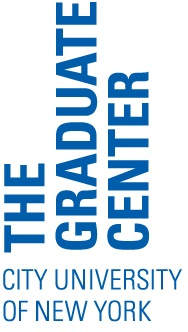How to Write a Diversity Statement

Diversity statements are a relatively new component of academic job applications. While some institutions may still ask you to address the topic of diversity within your cover letter, others now require a one or two page single-spaced document that explains how you will help create a more inclusive campus environment. In a diversity statement, you will draw on your personal background and past experiences to demonstrate your understanding of power, privilege, and the barriers to access faced by underrepresented populations. You will then explain in concrete terms how you will work to dismantle those barriers if hired by the institution. This article will provide concrete tips and prompts for writing an effective diversity statement.
Before you begin:
Follow instructions
Read the prompt carefully. Different institutions will request different types of documents in terms of both length and topic. Some may want you to address diversity within a particular arena of academia (for example: in your teaching) or as it relates to a specific population, while others may provide less explicit directions.
Do your research
Before you begin writing, research the institution’s own diversity and/or mission statements. Pay attention to the way they use the term “diversity.” How are they defining it? What specific populations do they appear interested in attracting? This information will help you write a more institution-specific statement.
While writing:
Use concrete examples
Be specific about what actions you’ve taken to promote diversity in the past. Discuss your experiences with diversity in the context of what they help you offer the university. For example, rather than simply stating that your classroom is inclusive, provide concrete examples of your pedagogical approach, syllabus design, or classroom activities. Who do they help include? How?
Acknowledge your privilege
Even if you’re not a diverse candidate yourself, you can still write thoughtfully about diversity. Keep in mind that the scope of diversity depends on discipline (for example, women are an underrepresented population in many STEM fields, but not in English). Don’t claim to be a diverse candidate if you’re not—search committee members who are passionate about diversity will be those who read your statement most carefully and will be critical of embellishments. Focus on large-scale issues of diversity such as race, gender, class, and ability, and if your background isn’t particularly diverse, detail the types of experiences you’ve had that have made you sensitive to these issues instead.
Avoid being overly personal
While you may choose to highlight some demographic information about yourself, your diversity statement is less a personal essay than it is a section of your CV in narrative form. The focus should not be you yourself, but rather what you’ve done to create a more inclusive academy.
Don’t repeat information from other job documents
While you will likely talk about aspects of your teaching and research within your diversity statement, try not to repeat information from your teaching and research statements. Remember that each of these documents has a specific purpose, and each is an opportunity to frame yourself in a new light for your potential employer.
Getting started:
Information for your diversity statement will generally fall into one of three categories: teaching, research, or service. It may also be helpful to think about diversity in terms of your past, present, and future actions. Below is a list of questions to help you get started.
Sample prompts:
Why is diversity valuable in academia? What experiences have you had that helped you understand the value of diversity or prove that you understand the obstacles faced by underrepresented groups? How have you helped (or will you help) promote diversity through concrete actions?
How do you contribute to diversity in your classroom? Is your syllabus and/or pedagogical approach inclusive? Does your range of classroom activities cater to diverse learners? Do you facilitate discussion in a way that is sensitive to power dynamics at play in the classroom? Does your course material itself emphasize diversity and/or include diverse voices?
Does your research revolve around issues of diversity? Does it address social inequalities? Does it highlight the voices of a diverse group of scholars? Have you collaborated with those diverse groups while conducting it? Has your research been shared with the community or public in a way that promotes access to scholarship?
Have you taken on leadership roles in campus diversity initiatives? Have you mentored students from underrepresented backgrounds? What new programs would you create to encourage diversity? How would you contribute to existing models at the institution?




